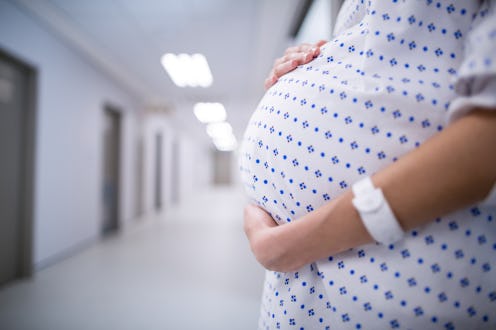Life
The U.S. Was Just Named The Most Dangerous Place In The Developed World To Give Birth

Every year, more than 50,000 women are seriously injured while 700 more die from childbirth-related complications in the United States, according to a USA Today investigation published on July 26. USA Today reports that hospitals and health care providers are failing to administer key safety steps that protect women and save lives after childbirth. As a result of these findings, investigators claim that the U.S. is the most dangerous place in the developed world to give birth.
People further reports that the soaring maternal mortality rate in the U.S. is largely due to negligence. According to the report, doctors and nurses across the country routinely skip crucial safety-monitoring steps, like keeping track of blood loss and rising blood pressure levels post-delivery. USA Today notes that providers should be “weighing bloody pads to track blood loss so they recognize the danger sooner,” as opposed to assessing blood loss visually. The research team also reports that it’s crucial to administer life-saving medications within an hour after high blood pressure is spotted in order to ward off strokes. The USA Today report states that because of this, “Women are left to bleed until their organs shut down. Their high blood pressure goes untreated until they suffer strokes. They die of preventable blood clots and untreated infections. Survivors can be left paralyzed or unable to have more children.”
The investigation team concludes that women are injured and dying after childbirth at alarming rates in the U.S. because hospitals are failing to keep up with known and long-established safety precautions, according to CBS. CBS also notes that the most common birth-related injuries and fatalities stem from either hemorrhaging or severely high blood pressure.
According to People, despite some medical advances, the maternal death rate in the U.S. has been steadily rising for the past 30 years, and has nearly doubled since the early 1990s. Michael Lu, former director of the federal Maternal and Child Health Bureau, and senior associate dean at George Washington University School of Public Health, told People for an article surrounding tennis star Serena Williams' birth complications that “In twenty-first century America, in the most powerful nation on Earth, no woman should ever die from pregnancy and childbirth.” People further notes that the largest discrepancies in maternal health care occur for Black women, who are three times more likely to die from childbirth complications than white women in the U.S. Women from low socioeconomic backgrounds also face a significantly a high risk.
USA Today asserts that while the majority of women who give birth in the U.S. do so safely and without injury, more than half of those who lose their lives or face life-altering injuries post-childbirth could have been saved with better health care — and by hospitals and medical workers adhering to established safety measures. USA Today further reports that hospitals nationwide report awareness of this gap in safety standards, and are upping their efforts to improve care. The American Hospital Association, which represents nearly 5,000 U.S. hospitals, told the USA Today team that they have in recent years been “holding closed-door training sessions aimed at getting maternity hospitals to improve care.”
USA Today also notes that California has been promoting the use of “safety kits,” comprised of safety tools and protocols, for pregnancy and childbirth in order to reduce maternal deaths and injuries — and these are proving highly effective. According to People, Lu and his colleagues have seen lowered rates of maternal death and injury since introducing the “safety bundles” between 2006 and 2012; California’s overall maternal mortality rates have decreased by 64 percent — and by 50 percent for Black mothers. Lu and his colleagues hope that by implementing higher quality maternal health care nationwide, childbirth for women across the U.S will become safer, and in line with the standards set by global peers.